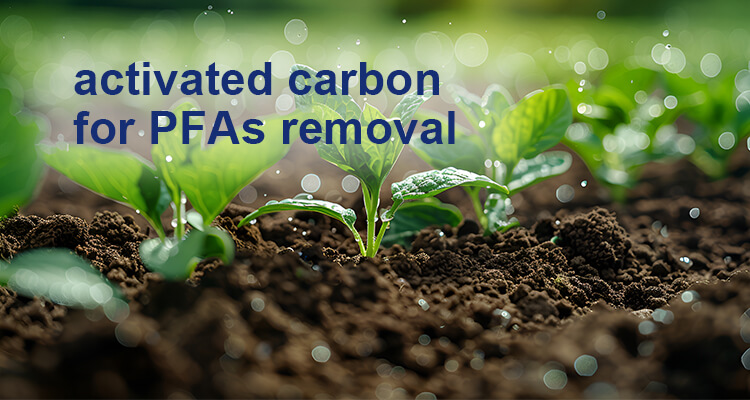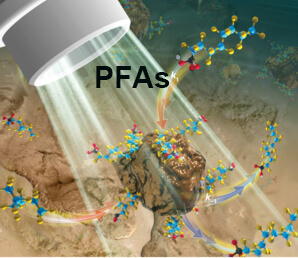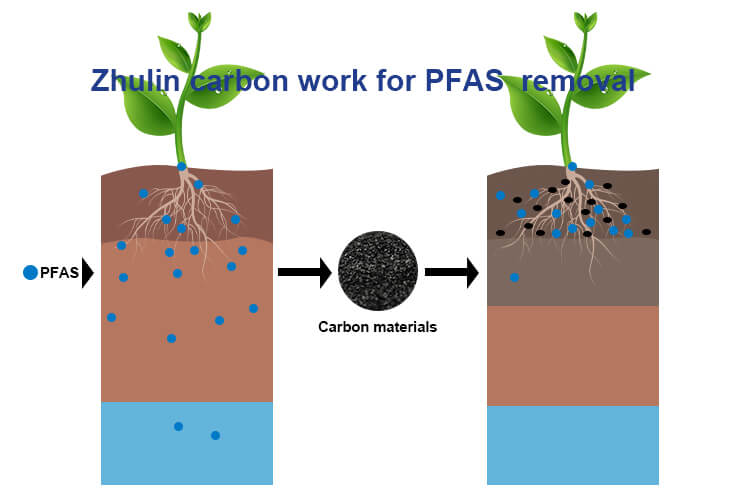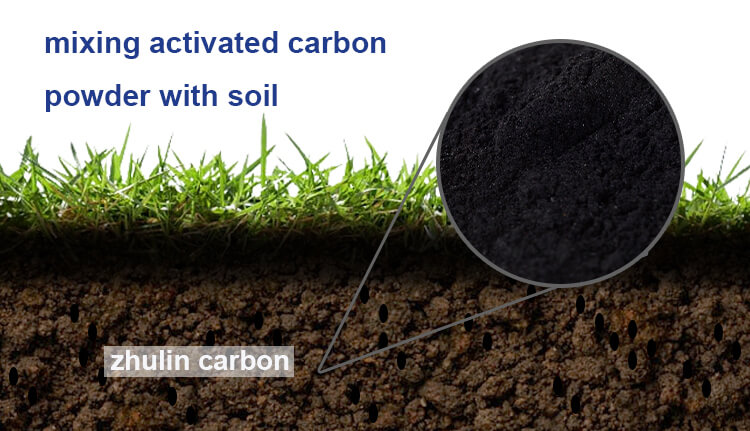This article examines the practical application of activated carbon in removing PFAs from soil, delving into its principles and advantages, along with proposed solutions in real-world remediation efforts.

What is PFAs?
PFAs, or per- and polyfluoroalkyl substances, in soil refer to the presence and accumulation of these synthetic chemicals within the soil environment. PFAs are a large group of man-made chemicals used in various industrial and consumer products for their resistance to heat, water, and oil. Due to their persistence and bioaccumulative properties, PFAs do not easily break down in the environment, leading to long-term contamination issues.
In soil, PFAs can enter through multiple pathways, including:
Industrial Discharges: Release of PFAs during manufacturing processes or from industrial sites where PFAs are used or produced.
Wastewater and Biosolids: Application of contaminated sewage sludge or biosolids as fertilizer, which can introduce PFAs into agricultural soils.
Firefighting Foams: Use of PFAs-containing firefighting foams, especially at airports, military bases, and firefighting training sites, leading to localized soil contamination.
Atmospheric Deposition: PFAs can be transported through the air and deposited onto soil from industrial emissions or through precipitation.
Landfills and Leachates: Disposal of PFAs-containing products in landfills, where they can leach into the surrounding soil and groundwater.
Once in the soil, PFAs can persist for many years due to their strong carbon-fluorine bonds, which resist degradation by environmental factors. This persistence can lead to the contamination of groundwater and surface water through leaching and runoff, as well as bioaccumulation in plants and soil-dwelling organisms, posing risks to the entire ecosystem and human health. Remediation of PFAs-contaminated soil is challenging, but technologies like activated carbon adsorption are being explored to mitigate these contaminants effectively.

Can activated carbon remove PFAS?
Activated carbon plays an important role in environmental governance due to its high specific surface area and rich pore structure. In the field of soil remediation, activated carbon can not only effectively adsorb harmful substances such as heavy metals and organic pollutants in the soil, reduce their concentration in the soil, and reduce the harm to the soil ecosystem, but also show excellent adsorption capacity for PFAs (polyfluorinated compounds).Activated carbon can adsorb PFAs and effectively fix them on the surface to remove PFAs from the soil.The technology can not only reduce the pollution of PFAs to soil and water bodies, but also help protect the safety of crops and water sources. In addition, activated carbon can also improve the air permeability and water retention of the soil during soil remediation, promote the growth of soil microorganisms, and thus accelerate the recovery and reconstruction of the soil ecosystem.

How does activated carbon remove PFAs?
There are many ways to use activated carbon in soil remediation. One common way is to add activated carbon directly to contaminated soil, mix and stir it to make it fully contact with the soil, and use the adsorption properties of activated carbon to remove pollutants in the soil. In addition, activated carbon can also be used as a carrier for soil remediation agents and combined with other remediation agents such as biological agents and nutrients to improve the remediation effect.Conclusion:
Activated carbon adsorption technology has important application value and development prospects in soil remediation. By continuously optimizing technology, reducing costs and improving remediation effects, activated carbon will provide strong technical support for solving soil pollution problems.Zhulin Carbon has unique advantages in this field. Its high adsorption performance, excellent surface activity and sustainable production process make it one of the preferred soil solutions. Cooperating with Zhulin Carbon achieves soil remediation projects now!

